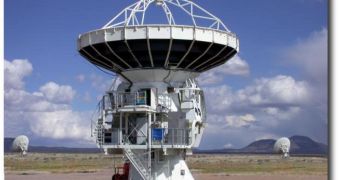Officials with the US National Science Foundation (NSF) announced that one of the prototype antennas used to test the validity of a massive observatory will be transferred within the United States, and not internationally as it had originally planned.
The NSF representatives said that the Harvard-Smithsonian Center for Astrophysics (CfA) was given control over the Vertex Prototype Antenna (VPA), which was originally developed for the Atacama Large Millimeter Array (ALMA).
The latter is one of the largest radio observatories in the world. Once completed, the sensitive telescope will feature 66 massive dishes, that will be able to observe the Cosmos with unprecedented accuracy.
According to NSF specifications, the VPA was originally developed for sub-millimeter wavelength astronomy, and was destined to test some of the technologies that will be applied on the large array.
Now, after its job is done, the antenna will go to the CfA, which will operate it in collaboration with international partners from the Taiwan-based Academia Sinica Institute of Astronomy and Astrophysics (ASIAA).
The two organizations began collaborating years ago, and have since constructed the Mauna Kea, Hawaii-based Submillimeter Array (SMA) together. A partnership featuring experts from both institutions is currently operating the SMA for mutual benefit.
“The prototype antenna will link with other submillimeter observatories like the SMA to provide an extremely sharp, high-resolution look at targets of interest, in a process known as Very Long Baseline Interferometry. It will also conduct single-dish observations,” CfA experts say in a statement.
“This antenna will operate as a pathfinder for the SMA and other interferometers like CARMA and the Plateau de Buré, and will also act as a test-bed for potential ALMA instrument development at the CfA,” adds Ray Blundell, the director of the SMA.
At this point, the location where the antenna will be installed has not been decided yet. Summit Station, a remote location atop a glacier in Greenland, has been proposed as a future location for the VPA.
But not everyone is happy with the way NSF choose to handle this antenna. While it will remain an American asset on paper, it will be entirely managed and handled by the ASIAA, to use as it sees fit.
Experts in the US are complaining that such an advanced piece of equipment has been transferred outside the country, when there was clearly an interest from national observatories in the device.

 14 DAY TRIAL //
14 DAY TRIAL //